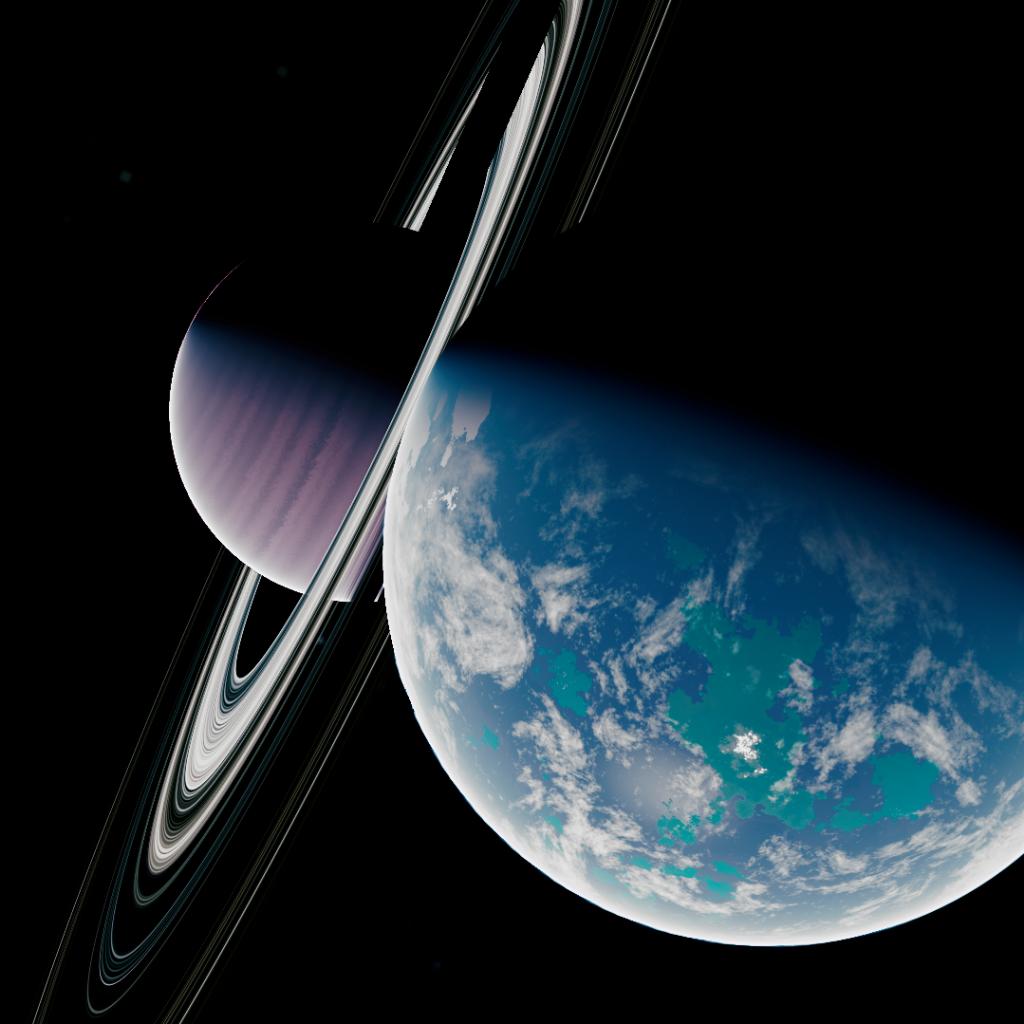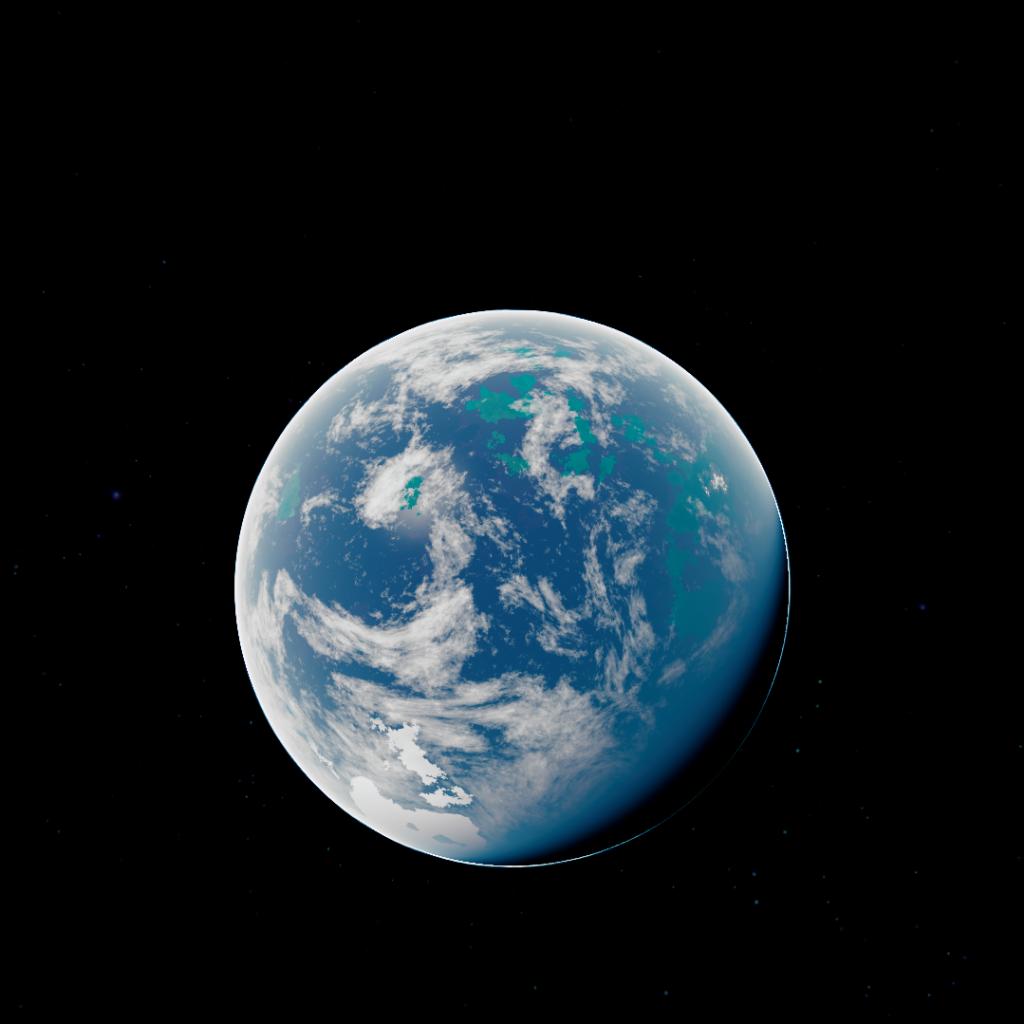IT IS TIME CHATTTT
And wow, Tallisar predicted the future cause when I used the gomillia system version of juno, the game decided to think that it is a clone and when I tried to replace it with the same star, the entire planet studio glitched. Soo for now, no juno system :(
Welp this took forever, I was really stressed making 2 systems idk why. ANYWAYS,
LORRRRE
PROLOGUE
The Droods were an advanced and peaceful civilization known for their deep connection with nature and their impressive technological achievements. They valued harmony with their environment, and their cities were built to blend seamlessly with the natural landscape. The Droods were also known for their intricate art and music, which reflected their appreciation for the beauty of their world. Droo was a lush, green planet with vast forests, crystal-clear lakes, and towering mountain ranges. The atmosphere was rich in oxygen, supporting a diverse ecosystem. The Droods built their cities in harmony with nature. Structures were made from sustainable materials, and energy was harnessed from renewable sources like solar and wind power. Despite their harmonious lifestyle, the Droods were technologically advanced. They had developed space travel, advanced medicine, and sophisticated communication systems. The destruction of Droo came suddenly and without warning. A gamma ray burst (GRB) from a distant supernova swept through the Juno system, bombarding Droo with lethal radiation. The intense radiation from the GRB stripped away Droo’s atmosphere, boiled its oceans, and scorched its surface. The once vibrant planet was reduced to a barren wasteland in a matter of moments.The destruction of Droo came suddenly and without warning. The atmosphere turned into very hot air, making Droo’s day temperature soar to 600.3 Kelvins (approximately 327°C or 620°F). The few Droods who were off-planet at the time of the catastrophe became the last survivors of their species. They were left to wander the galaxy, carrying with them the memory of their lost home. In the wake of the catastrophe, the surviving Droods embarked on a desperate journey to find a new home. They traveled to the Gomillia system, a distant star system known for its habitable planets. Upon arriving in Gomillia, the Droods began the arduous task of rebuilding their civilization. They established new colonies, drawing on their advanced technology and deep connection with nature to create harmonious settlements. The surviving Droods have dedicated themselves to preserving the memory of their lost world. They travel the galaxy, sharing their knowledge and culture with other civilizations.
THE ARIVAL OF LITHSA
Lithsa is a desert planet located in the Gomillia system. Despite its arid environment, it is the main source of life in the system, thanks to its scattered oases and underground water reserves. The planet’s harsh conditions have shaped a resilient ecosystem and a resourceful population. Lithsa’s surface is dominated by vast deserts, with towering sand dunes and rocky plateaus. The planet experiences extreme temperatures, with scorching days and freezing nights. However, there are pockets of life-sustaining water, primarily found in hidden oases and deep underground aquifers. These water sources are crucial for the survival of both native species and the Droods who have settled there. The flora on Lithsa is adapted to the harsh desert climate. Hardy plants with deep root systems thrive near the oases, while resilient shrubs and cacti dot the landscape. The fauna includes a variety of desert-adapted creatures, from small, burrowing animals to larger, nomadic herbivores. Predatory species have evolved to be efficient hunters, capable of surviving long periods without water. The Droods, having faced overpopulation issues with their current population reaching 50 trillion, have expanded their presence in the Gomillia system, with Lithsa being a key settlement. They have built advanced infrastructure to extract and distribute water, ensuring the sustainability of their colonies. The Droods have also developed technologies to harness solar energy, making the most of Lithsa’s abundant sunlight. Lithsa holds a special place in Drood culture as a symbol of resilience and adaptability. The Droods have established thriving communities, blending their advanced technology with the planet’s natural resources. They celebrate their ability to transform a seemingly inhospitable world into a hub of life and activity. Despite their success, the Droods on Lithsa face ongoing challenges. The limited water supply requires careful management, and the harsh climate demands constant innovation in living conditions and resource utilization. However, the Droods’ ingenuity and determination continue to drive their efforts to make Lithsa a sustainable and prosperous home.
THE DROODS EXPANSION
The Droods, originally from the Juno system, faced a catastrophic event in 3658 when a Gamma Ray Burst rendered their home planet, Droo, uninhabitable. This forced them to flee to the Gomillia system. Over time, their population grew exponentially, reaching 50 trillion, necessitating further expansion to sustain their civilization. To manage their burgeoning population and resource needs, the Droods developed advanced gate technology, enabling efficient interstellar travel. These gates, known as Interstellar Velocity Gates (ISVs), allowed them to explore and colonize new star systems rapidly. The Droods faced numerous challenges in their expansion efforts, including resource management, environmental adaptation, and maintaining social cohesion across vast distances. However, their ingenuity and technological prowess enabled them to overcome these obstacles. The Droods’ expansion is an ongoing process, driven by their need to accommodate a growing population and their desire to explore the cosmos. They continue to push the boundaries of their technology and knowledge, seeking new worlds and opportunities. The Droods’ story is one of resilience, adaptability, and relentless pursuit of progress, making them a remarkable civilization in the galaxy
GENERAL INFO
- Predecessor: Gomillia system Beta 0.85 (50 objects)
- Created On: Windows
- Game Version: 1.3.203.1
CELESTIAL BODIES
| Name | Parent | Radius | Surface Gravity | Apoapsis | Periapsis |
|---|---|---|---|---|---|
| Juno | 73,910 km | 145.6 m/s | - | - | |
| Indell | Juno | 635 km | 7.0 m/s | 2,504.8 Mm | 2,499.8 Mm |
| Rrenus | Juno | 1,000 km | 17.3 m/s | 6,336.4 Mm | 6,323.8 Mm |
| Tasciovuli | Juno | 350 km | 1.6 m/s | 10,192.3 Mm | 10,172.0 Mm |
| Iantian | Juno | 727 km | 5.6 m/s | 14,982.8 Mm | 14,952.9 Mm |
| Junes | Juno | 14,000 km | 24.8 m/s | 18,374.3 Mm | 18,337.6 Mm |
| The tropical moon of junes | Junes | 350 km | 1.6 m/s | 46,404 km | 46,311 km |
| Ecurnaet | Juno | 350 km | 1.6 m/s | 20,316.7 Mm | 20,276.1 Mm |
| Nalin | Juno | 2,500 km | 11.6 m/s | 21,950.7 Mm | 21,906.8 Mm |
| Ditascupt | Juno | 14,000 km | 24.8 m/s | 25,586.2 Mm | 25,535.1 Mm |
| shimai | Ditascupt | 835 km | 9.2 m/s | 121.6 Mm | 121.4 Mm |
| kyoudai | shimai | 835 km | 9.2 m/s | 12,887 km | 12,861 km |
| Auisa | Ditascupt | 1,274 km | 9.8 m/s | 398.8 Mm | 398.0 Mm |
| Nef | Ditascupt | 402 km | 4.0 m/s | 832.4 Mm | 830.8 Mm |
| Lithisa | Juno | 1,274 km | 9.8 m/s | 29,121.7 Mm | 29,063.5 Mm |
| Ixia | Juno | 1,274 km | 9.8 m/s | 33,091.0 Mm | 33,024.9 Mm |
| Pestian | Juno | 400 km | 20.0 m/s | 37,540.6 Mm | 37,465.6 Mm |
| Accam | Pestian | 23 km | 0.4 m/s | 6,054 km | 6,042 km |
| Rtascina | Pestian | 250 km | 1.2 m/s | 23,112 km | 23,066 km |
| Ochian | Juno | 3,500 km | 16.2 m/s | 46,639.7 Mm | 46,546.5 Mm |
| Sana | Juno | 350 km | 1.6 m/s | 71,013.4 Mm | 70,871.6 Mm |
| Erecurni | Sana | 350 km | 1.6 m/s | 3,429 km | 3,422 km |
| Trappist | Juno | 350 km | 1.6 m/s | 101,685.3 Mm | 101,482.1 Mm |
| Eca | Juno | 140.0 Mm | 247.9 m/s | 152,462.5 Mm | 152,157.9 Mm |
| Aries | Juno | 139.1 Mm | 274.0 m/s | 280,233.8 Mm | 237,583.4 Mm |
| Aries A | Aries | 12,000 km | 32.0 m/s | 3,405.2 Mm | 2,005.7 Mm |
| Aries B | Aries | 635 km | 7.0 m/s | 7,255.9 Mm | 7,241.4 Mm |
| Asterope | Juno | 139.1 Mm | 274.0 m/s | 1,001,000.0 Mm | 999,000.0 Mm |
| Asterope II | Asterope | 139.1 Mm | 274.0 m/s | 113,058.1 Mm | 102,142.3 Mm |
| Asterope IIa | Asterope II | 1,000 km | 4.6 m/s | 17,423.4 Mm | 17,388.6 Mm |
| lenta | Asterope IIa | 10 km | 0.2 m/s | 9,388 km | 9,370 km |
| Bongoa | Asterope IIa | 63 km | 1.1 m/s | 64,594 km | 16,958 km |
| Aurora | Asterope | 139.1 Mm | 274.0 m/s | 326,632.6 Mm | 325,980.0 Mm |
| Audora B | Aurora | 5,000 km | 8.9 m/s | 4,370.3 Mm | 4,361.6 Mm |
| Audora C | Aurora | 1,274 km | 9.8 m/s | 39,670.3 Mm | 39,591.1 Mm |
| 1-JJU-234 | Audora C | 23 km | 0.4 m/s | 54,656 km | 17,435 km |
| Sersa | Juno | 500.0 Mm | 984.9 m/s | 8,008,000.0 Mm | 7,992,000.0 Mm |
| Pentas | Sersa | 2,274 km | 17.5 m/s | 190,092.3 Mm | 189,712.5 Mm |
| Lumarina | Pentas | 985 km | 4.6 m/s | 285.4 Mm | 163.3 Mm |
| Aetherion | Juno | 93,910 km | 185.0 m/s | 26,594,155.6 Mm | 26,541,020.4 Mm |
| Hecterak | Aetherion | 8,274 km | 63.6 m/s | 29,194.4 Mm | 29,136.0 Mm |
| Netean | Aetherion | 8,400 km | 40.0 m/s | 70,703.5 Mm | 70,562.3 Mm |
| Ccan | Netean | 2,500 km | 12.0 m/s | 192.8 Mm | 156.1 Mm |
| Acrosa system | Juno | 20,000 km | 1.00 km/s | 50,050,000.0 Mm | 49,950,000.0 Mm |
| Acrosa B | Acrosa system | 52,000 km | 92.1 m/s | 16,637.1 Mm | 5,505.0 Mm |
| Acrosa A | Acrosa system | 54,000 km | 95.6 m/s | 18,076.5 Mm | 5,981.3 Mm |
| Acrosa Aa | Acrosa A | 450 km | 2.2 m/s | 1,077.1 Mm | 1,074.9 Mm |
| Orsda | Juno | 900.0 Mm | 1.77 km/s | 100,100,000.0 Mm | 99,900,000.0 Mm |
| Aurelia | Orsda | 50,000 km | 98.5 m/s | 823,422.1 Mm | 554,259.4 Mm |
| Dsas | Aurelia | 1,274 km | 9.8 m/s | 8,956.0 Mm | 8,938.1 Mm |
| Suri | Juno | 1,391.0 Mm | 2.74 km/s | 150,150,000.0 Mm | 149,850,000.0 Mm |
| Zephyros | Suri | 150.0 Mm | 265.6 m/s | 358,515.8 Mm | 357,799.5 Mm |
| Thalassia | Zephyros | 4,500 km | 34.6 m/s | 1,328.7 Mm | 1,194.2 Mm |



even i cant compare with that. my planets building skills are 0